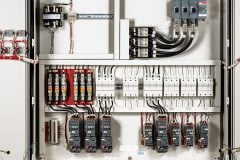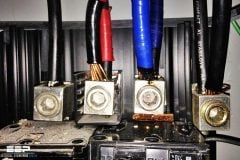
National Electrical Code (NEC 2011)
The National Electrical Code (NEC 2011) provides guidance for electrical contractors and electricians, but it is really intended for use by governmental agencies that have legal jurisdiction over electrical installations and authorized electrical and insurance inspectors. The many mandatory chapters include Chapter 2, “Wiring and Protection,” Chapter 3, “Wiring Methods and Materials,” and Chapter 4, “Equipment for General Use.”
These are supplemented by Chapter 5, “Special Occupancies,” Chapter 6, “Special Equipment,” and Chapter 7, “Special Conditions.”
NEC 2011 distinguishes between installations and equipment operating at under 600 V and those operating at over 600 V AC. This chapter covers only installations and equipment operating at under 600 V AC.
Local electrical and building codes as well as local power utilities may define local requirements more definitively than alternatives approved by the NEC that they, based on experience, consider to be too general.
However, under no circumstances will they relax any of the NEC provisions. This chapter highlights important information from the first four chapters of NEC 2011, but this coverage is intended as a guide to rather than a substitute for the NEC text. It is limited to the general intent of the mandatory requirements and does not discuss the many exceptions.
The reader is strongly advised to read carefully the NEC source articles and become aware of those exceptions.
Article 210, “Branch Circuits
NEC 2011, Article 210, “Branch Circuits,” in Chapter 2, “Wiring and Protection,” covers branch circuits except for those that supply only motor loads. The ratings for branch circuits are 15, 20, 30, 40, and 50 A.
- Permanent ground-fault circuit-interrupter (GFCI) protection is to be installed on all 125-V, single-phase, 15- and 20-A receptacles in bathrooms, garages, crawl spaces, and unfinished basements, and at utility sinks and outdoor locations.
- The minimum number of branch circuits in a residence is to be determined from the total computed load and the size or rating of the circuits used.
- The load is to be evenly proportioned among multi-outlet branch circuits within the panelboard (main service panel or loadcenter).
- At least two 20-A branch circuits are to be provided for small appliances in kitchens, laundry areas, and bathrooms.
- Ampacity and size requirements for all branch circuit conductors are to be based on the non-continuous load plus 125 percent of the continuous load. Ampacity ratings of conductors are covered in Article 310.15, Chapter 3, “Wiring Methods and Materials.”
- Receptacle ratings must match or exceed the branch circuit ratings.
- Copper branch-circuit conductor gauges must be 15 A, 14 gauge; 20 A, 12 gauge; 30 A, 10 gauge; 40 A, 8 gauge; and 50 A, 6 gauge.
- Receptacle requirements are in addition to any receptacles that are part of a lighting fixture or appliance. Receptacles installed in kitchens, family rooms, dining rooms, bedrooms, etc., are to be spaced so that no point along the floor line in any unbroken space is more than 6 ft from a receptacle.
- Kitchen receptacles: Countertops must have at least two small-appliance branch circuits. One is to be on any wall counter space more than 12 in. wide, and none is to be more than 24 in. from any point along the wall. In general, they are to be less than 20 in. above the countertop. Island and peninsula countertop spaces (without adjacent walls) are to have at least one receptacle in each space measuring 12 in. 24 in. or more. They can be less than 12 in. below the countertop.
- Bathroom wall receptacles: At least one is to be installed on the wall adjacent to and within 3 ft of the edge of each basin.
- Outdoor receptacles: At least one is to be installed above grade not more than 6.5 ft at the front and back of the residence.
- Laundry area receptacles: At least one is to be installed.
- Basement and garage receptacles: At least one is to be installed in each basement and garage (attached or detached).
- Hallway receptacles: At least one is to be installed in hallways 10 ft long or more.
- Lighting switch-controlled outlets: At least one is to be installed in all habitable rooms, bathrooms, hallways, stairways, garages, and outside of ground-level entrances. In general, they should be on each floor and landing level of stairways.
Reference: Handbook of electrical design details – Neil Sclater, John E. Traister (purchase book here)











THANKS IN ADVANCE
so helpful paper
thank u so much
Just as a reminder to those not in the United States, the NEC (ie NFPA 70) has a revision every three years. The latest installment will be the 2014, which makes the last 2011.